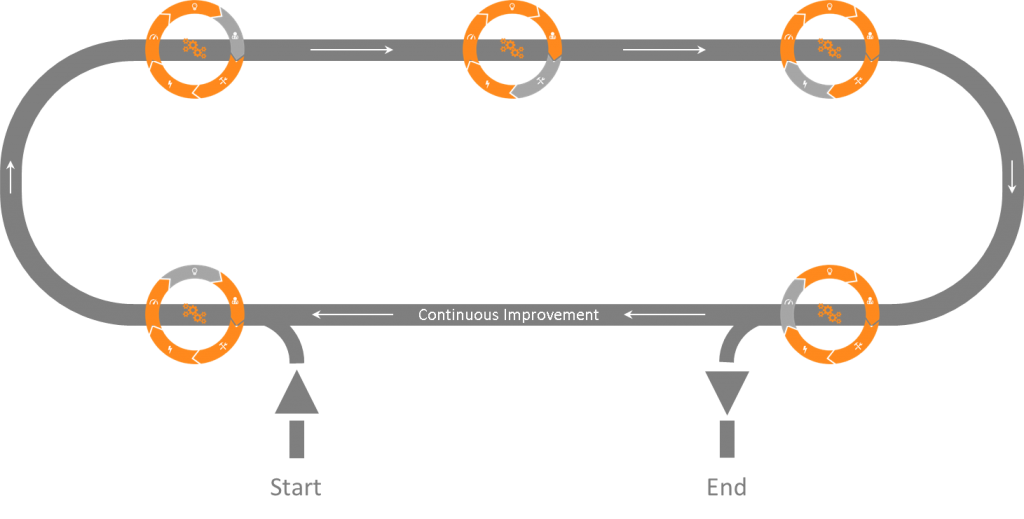Q: How do you get ahead in a world where customers are in control?
A: By delivering a customer experience that meets or exceeds customer expectations and that is superior to the one offered by your competitors.
Customers have more power, now, than they have ever had.
This is because they have both a voice and a choice. Their voice allows them to vent their dis-satisfaction on social media and their choice allows them to click away to your nearest competitor.
So how can you still ‘win’?
Businesses can succeed with their customers – i.e. drive satisfaction, loyalty and retention – by providing value that is both timely and relevant to the customers’ needs. This value could be in the shape of access to information, or fixing a problem, or providing a solution: whatever helps the customer to achieve their goal, at that point in time.
5 Simple Steps
The following five-step, closed-loop process outlines how to engineer an existing, end-to-end experience in order to deliver improved efficiency, efficacy and value to both you and your customers.
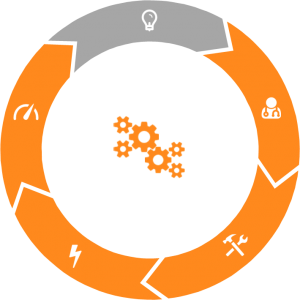 |
Step #1: Explore, Listen, Discover, Reveal, Learn topThe Discovery step is focused upon assessing and illustrating your current reality. For a given end-to-end journey, the discovery, or where-are-we-now, step involves two methods. First, an ‘outside-in’ technique that establishes how your customers perceive your organisation, it’s products and it’s services – in respect of their needs. Second, is an ‘inside-out’ technique that assesses how your organisation perceives, and approaches, the customer experience. This gives your organisation a sanity-check on its own, current position and internal perceptions. This stage answers key questions, such as:
This is, in essence, a holistic cause-and-effect analysis and drives the understanding of customers – the first step towards understanding your Customer Experience EcoSystem. |
|||
|
|
||||
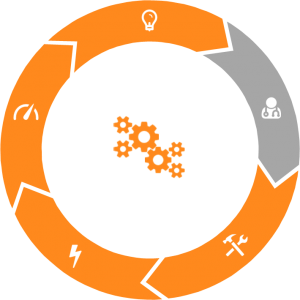 |
Step #2: Interpret, Analyse, Diagnose, Understand topThe objective of the Diagnosis stage is to pull each of the research strands, from the Discovery stage, together and turn them into tangible, actionable insights. Each ‘insight’ describes, in as much detail as possible, the cause and effect of it’s subject business-performance area. There can be multiple reasons (root causes), in any journey, for under-performance. Each one of these root causes can contribute to a specific under-performance effect – e.g. customer attrition – these causes are grouped into what we call issue-scenarios. These issue-scenarios are the basis for generating solution-ideas and we identify and outline a number of acceptable solution-ideas for each issue-scenario. These solution-ideas are often based upon proven best practices from other successful implementations. Once we have identified this range of acceptable solution-ideas, we need to prioritise them by balancing their potential impact with their deliverability using clear and common criteria, in order to create a ranked list of Priorities-for-Action (PFAs). We then take each prioritised solution-idea and define and describe, in detail, the characteristics of an acceptable solution so that in the next stages, Design and Implementation, the project team has a clear understanding of what to design and how to implement the design-solution. |
|||
|
|
||||
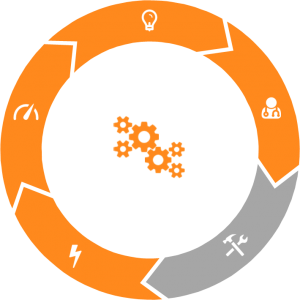 |
Step #3: Envision, Design, Create, Engineer, Develop, Build, Prototype, Test topDesign must drive the experience-building process if the experience is to be efficiently and effectively delivered across touchpoints and channels (e.g., phone, online, face-to-face, etc.). With a robust foundation of customer insight and business objectives to work from, we can now begin to prototype and collaborate on how the experience should play. Customer experience improvement demands diversity – and we know what it’s like to be on the frontline. Our experience is that great customer experiences require a team with a really diverse set of skills that span strategy, research, culture and process – to name but a few. The capability to successfully integrate design, development and implementation, across multiple teams and business functions, is vital – so we, jointly, strive to build interactions, that support experiences, that achieve business objectives, by maintaining a customer-centric focus. And, with our customer-centred DNA, we’re able to ensure that the complexity doesn’t detract from the effective experience, that we’re all striving to deliver, across any channel. |
|||
|
|
||||
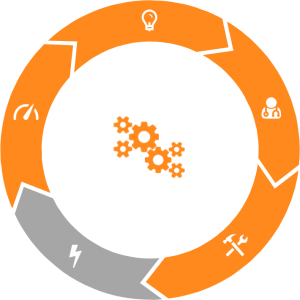 |
Step #4: Deploy, Implement, Execute topThe Implementation stage is where we transition from our current-state – and all of the pain/problems that it embodies – to our future-state – where we kick-off the brand-new experience and integrate it into a live, operational environment. The Implementation stage describes how the solution will be deployed and transitioned into an operational environment. The plan contains an overview of the solution, a brief description of the major tasks involved in the implementation, the overall resources needed to support the implementation effort – such as processes, systems, personnel, facilities, etc. – as well as any location-specific implementation requirements. The plan is started during the Design stage and is routinely updated during solution-development; the final version is provided in the integration/test phases and is used during the Implementation stage. The Implementation plan uses classic project management techniques to detail and execute all of the action-steps that are required to transition the experience into the live environment. |
|||
|
|
||||
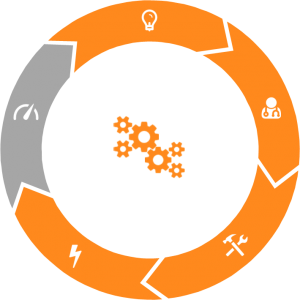 |
Step #5: Monitor, Measure, Review, Results topThe Measurement stage will constitute a part of your wider Customer Experience Measurement Framework or Scorecard. The purpose of the Measurement stage is to assess experience-performance against targets and baselines that were created in the Discovery/Diagnosis stages. Whilst the ‘new’ experience may take time to settle down and to produce customer-feedback, this is still a vital activity to perform as it provides justification to the business case. The measurements that we are concerned with, here, are customer-related and cover their perception of experience-performance, not the organisation’s. It is also critical to capture both qualitative and quantitative measurements here, i.e. the what and the why. Customer perceptions will be measured as discrete, step-by-step reactions to each stage in the end-to-end journey of the subject-experience – for example, if you were an airline then we would be dealing with all the steps in planning and taking a flight. Alternatively, if you were a retailer, then we might be dealing with all the steps involved in returning and refunding an unwanted purchase. The measurements should provide clear and relevant details about customers’ specific experiences with individual touchpoints that they encounter along each journey. Regular performance-reporting of this ‘new’ experience should now appear alongside all of the other deployed experiences, in order to provide comprehensive management reporting via the Customer Experience Measurement Framework or Scorecard application. Long-term performance-monitoring, of the experience, is also vital – this enables early detection of any declining trends as customer needs/expectations/perceptions change. |
|||
|
|
||||
Contact Us Click here to learn more.
